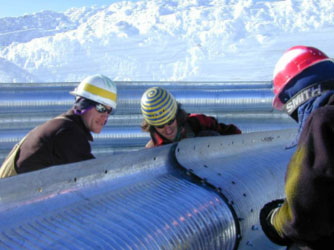Working in Cold Weather
Exposure to cold can result in cold stress that can lead to serious trouble such as frostbite, hypothermia, and even death. The likelihood of illness depends on many factors including physical activity, clothing, wind, humidity, and a person’s age and general health.
According to OSHA, more than 700 hypothermia deaths occur each year in the United States. In addition to hypothermia, frostbite is also a serious hazard of cold that can cause permanent damage to body tissue.

Preventing cold-related injuries and illnesses:
-
Wear appropriate clothing;
-
Avoid wetness or excessive sweating;
-
Stay dry by changing into dry clothes and shoes if they become wet;
-
Keep active by avoiding sitting or standing still for prolonged periods;
-
Take frequent breaks in warm, shielded areas;
-
Work in pairs to keep an eye on each other;
-
Consume warm, high calorie food often;
-
Drink plenty of warm non-caffeinated, non-alcoholic liquids; and
- Don’t smoke.
- Workers can be protected from cold stress by providing training, controlling temperature and exposure to wind when possible by using heaters and windbreaks, rotating workers in cold jobs so that no one is exposed too long, scheduling work at warmest times, encouraging self-pacing and extra breaks if necessary, establishing a buddy system, and keeping first aid supplies and equipment available.
Don’t be safety blinded, be safety minded..
Download flyer: STOTW_4_Working in Cold Weather.pdf (126.51 kb)

